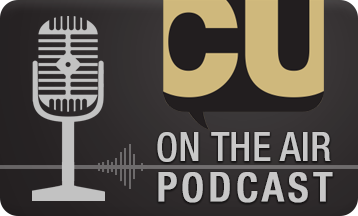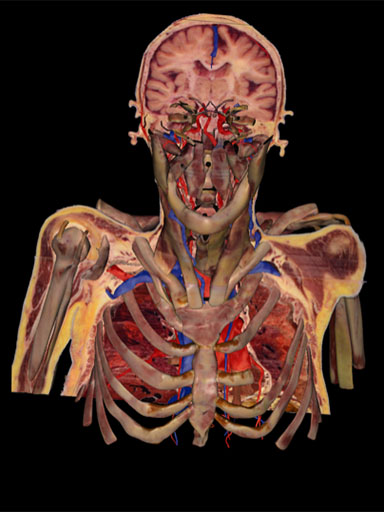Podcast: Play in new window | Download
Subscribe: Spotify | Email | RSS | More
Dr. Spitzer discusses the process in giving new life to Susan Potter as a living cadaver
Dr. Victor Spitzer, director of the Center for Human Simulation at the University of Colorado School of Medicine, chats with host Ken McConnellogue about the amazing Virtual Human living cadaver. Dr. Spitzer and his team froze, sectioned and sliced body-donor Susan Potter, who died at age 87 and now lives on in 27,000 photos.
- (skip to: 1:27) What is the virtual human and how can it help us connect to reality?
- (skip to: 2:24) Susan Potter: A philanthropist, fundraiser, body donor
- (skip to: 1:27) Slicing and imaging the body to teach students about anatomy and compassion.
- (skip to: 4:13) Susan Potter’s life and how it will impact the study of anatomy.
- (skip to: 4:50) A broken ‘promise’ – Potter said she’d die within a year; she lived 14 more years.
- (skip to: 6:30) Creating an unwitting bond after 14 years. “If I’m going to cut you up I don’t want to be your friend.”
- (skip to: 7:27) The dissecting process: Grinding off thin layers of tissue of the frozen body.
- (skip to: 8:50) The reverse engineering of the human body.
- (skip to: 9:30) How students will benefit from the Virtual Human, including her age, pathology and listening to Susan Potter discuss her pain and experience.
- (skip to: 10:50) The Visible Human from the 1990s – how it’s still being developed and moving ahead.
- (skip to: 11:30) How technology has improved the virtualization process.
- (skip to: 12:25) National Geographic – the longest running story in the magazine’s history.
- (skip to: 13:40) International attention and the reaction of readers to the story.
- (skip to: 15:15) Compassion versus competency – striving for both.
- (skip to: 16:00) Where the visible and virtual realities live now, virtual reality in place at CU.
- (skip to: 18:15) Touch of Life Technologies – fabricating the feeling of human tissue for medical students.
- (skip to: 19:55) Where does the traditional cadaver stand within the new age?
- (skip to: 21:10) What’s coming up in the next decade? Simulating movement with muscle contraction; flowing fluids through the body.
- (skip to: 22:40) Susan Potter now: What is she saying beyond the grave? Most likely that she’ll be happy when students are gaining knowledge from she has left them.
- (skip to: 24:15) The project completion estimate? Never!
- (skip to: 25:30) How Hollywood has helped the Visible and Virtual Human programs.
Resources:
- Susan Potter gave her body to science. Her cadaver become immortal, National Geographic
- Virtual human — a living cadaver — pushes boundaries of anatomical science, CU Anschutz Today, Dec. 13
- Befriending the woman I’d have to dissect, BBC, March 12
- Touch of Life Technologies
- CU Anschutz Medical Campus


